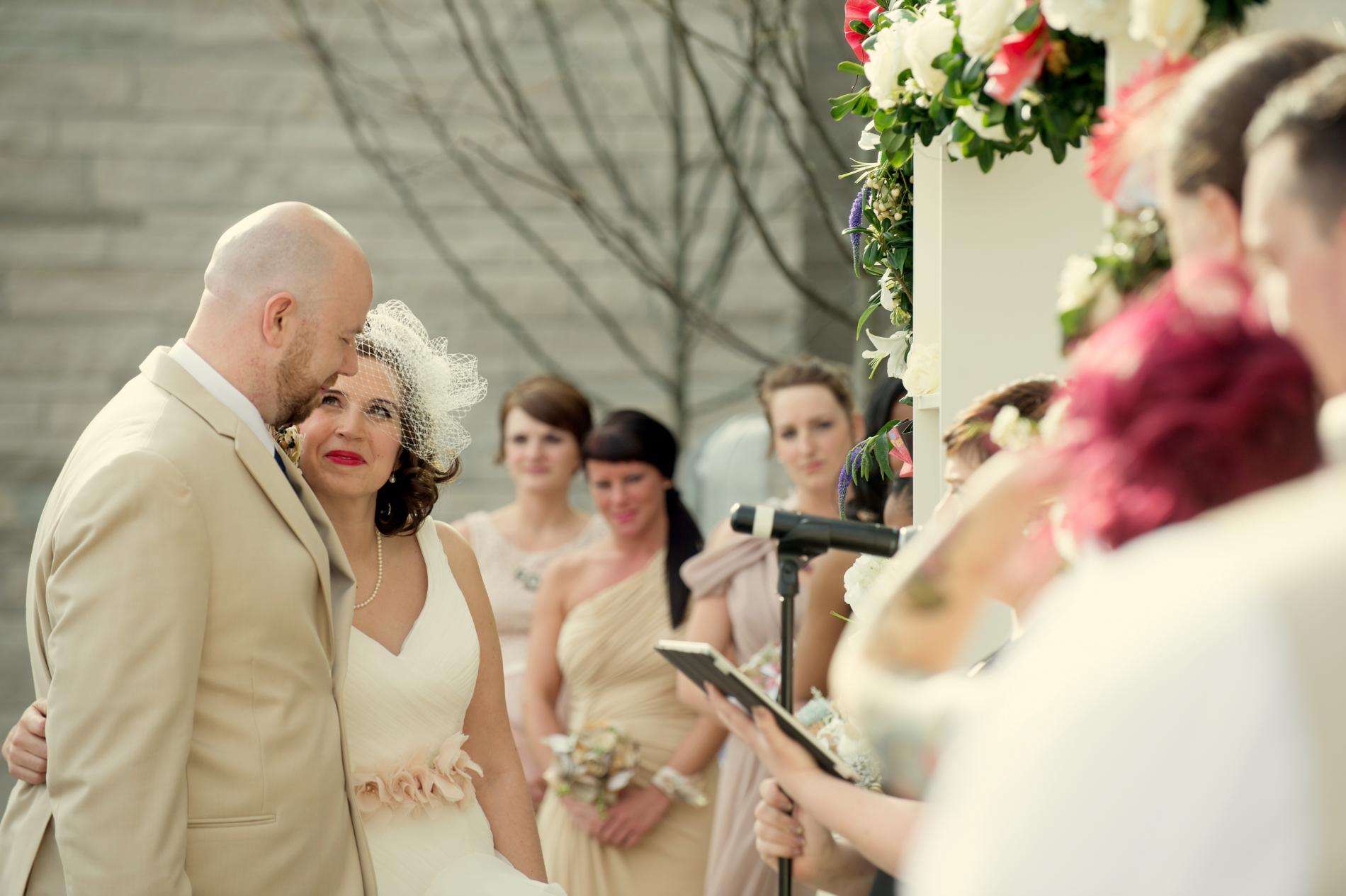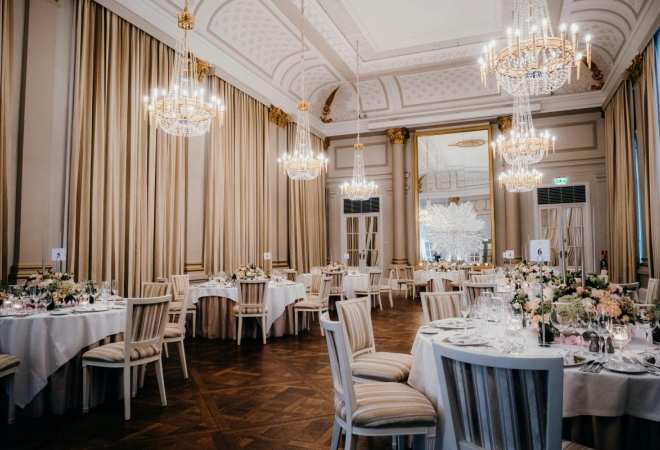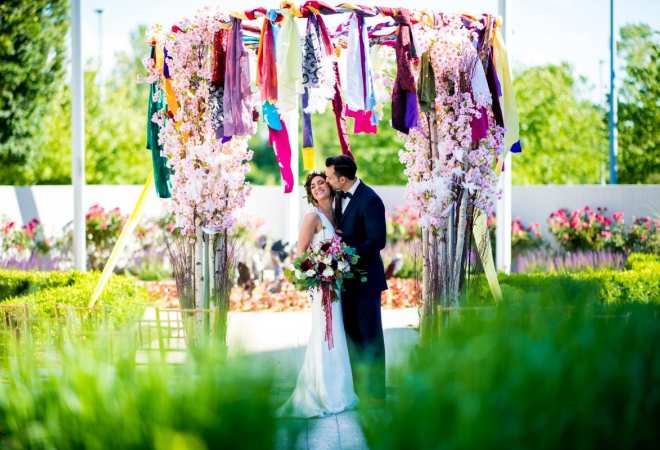How do you address an envelope to a military officer? How should an invitation be written when both sets of parents are divorced? What if you're paying for your own wedding? How do we tell guests where we're registered? These are just some of the common questions many couples have when composing their invitations.
Today's formal etiquette was developed in the French royal court in the 17th and 18th centuries by nobles who, frankly, had too much time on their hands. They drew up an elaborate list of proper social behavior and customs to keep from becoming bored. This code of behavior was eventually adopted by other European countries and social classes.
Over the years, etiquette's reach broadened to children (such as instructing them to remain silent until spoken to) and daily life, and it became useful as a way for people to know what to expect in social situations. Your parents may remember the time when a woman was expected to sit quietly in the car until her date walked around the car and opened her door.
Today, etiquette "rules" have become much more informal and casual. When planning your wedding, rather than adopting some meticulous rule that doesn't make sense, the best decisions you can make are those that stem from common sense and, above all, consideration for your guests. Emily Post says it best: "The goal is a celebration wherein the interests of all concerned--you, your family, your wedding party, your guests--are given utmost care and attention."
Your invitation is often the first item that requires some attention to etiquette. Following are some answers to common questions when writing your invitation and preparing your guest list:
Traditionally, the wedding invitation came from the hosts (i.e., the people paying for the wedding),which typically was the bride's parents. There are many acceptable variations to this today. Let consideration be your guide, and do what feels right and comfortable for both of you. With many couples having divorced or remarried parents, the invitation can get complicated. Some couples choose to simply say, "Together with their families" instead of listing all parents separately. It would be wise to discuss this with all of your parents to avoid any hurt feelings later on.
Including registry information with your wedding invitation has become more of a common practice in recent years. However, just because it's more convenient or commonplace does not make it acceptable. Making a point of telling people where you're registered implies that the guest should not attend without bringing a gift, and while you're at it, you're going to let them know exactly where they should buy it! Focus on why you're inviting your guests: because you want them to share in this memorable day, not for the gift they're bringing. Rely on your immediate family and close friends to spread the word about where you've registered for gifts.
If you have guests from out of town, or if your wedding is in a unique location, consider including a map and/or written directions. This information can also include any hotel accommodations that you have set up for your guests. One caution: be sure that your map is accurate! Maps and directions generated through online sites such as MapQuest are often incorrect, and will leave your guests floundering in unfamiliar territory. Drive the route while following the map or directions you've prepared, so that you can be sure it's correct for your guests.
It is in poor taste to have "A" and "B" guest lists. When space and budget are not in keeping with the size of the guest list, some couples have resorted to sending their invitations first to the "A" list, and when enough regrets have come back, they will send out more to the "B" list--hoping no one from the two lists knows each other. Inviting people at the last minute makes it obvious that they weren't on the first list, which will make them feel more unwelcome than if you had not invited them at all.
SOME TIPS ON ADDRESSING YOUR INVITATIONS
Your outer envelope receives the formal address with the mailing address. If using an inner envelope, do not add "and guest" or "and family" on the outer envelope; these should be specified on the inner envelope.
Addressing of the inner envelope is for the more informal salutation. For example, your outer envelope might say "Mrs. John Smith," and your inner envelope would read "Grandma." Keep in mind that this salutation should be appropriate for whoever is listed on the invitation as the host.
Etiquette dictates hand-addressing or calligraphy as being the proper choice for addressing your envelopes, simply because it's more personal. Next in line is laser addressing printed directly on the envelopes (a good choice if your handwriting is not very attractive). Labels should only be used as a last resort. In the case of a dark envelope, use a decorative label that matches the design of the invitation.
Take care to spell your guests' names and addresses correctly, and in the case of a non-married couple or children, use all names whenever possible rather than "and guest" or "and family." If you don't know last names or the spelling, take the time to call and ask.
Spell out all typical abbreviations. For example, "123 S. Main St., Apt. 3, South Bend, IN" should be written as "123 South Main Street, Apartment No. 3, South Bend, Indiana," with each phrase on a separate line. Use "and" instead of an ampersand, such as in "Mr. and Mrs."
Perhaps the best etiquette advice is to remember the golden rule, and be sensitive, inclusive, and respectful to those around you, whether it's stepparents, extended family, divorced parents, or your guests. The correct etiquette is the one that accomplishes this for everyone!








Join the conversation
Log in or register to post comments